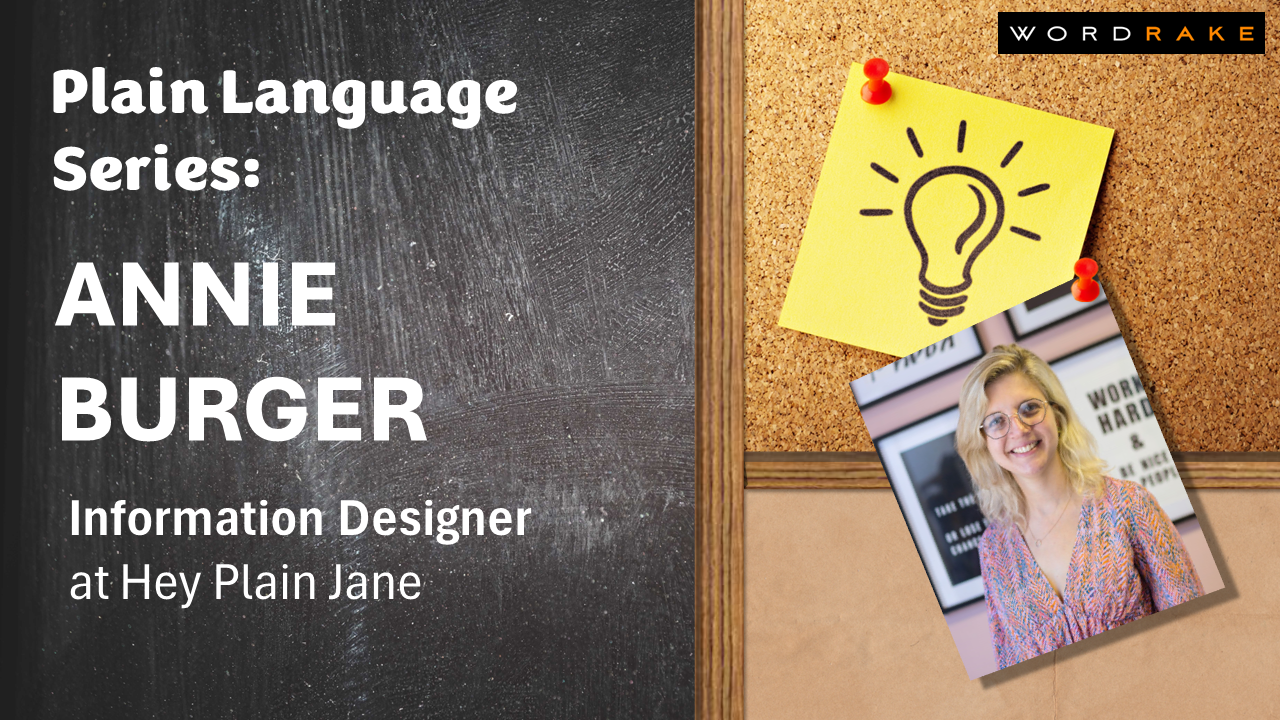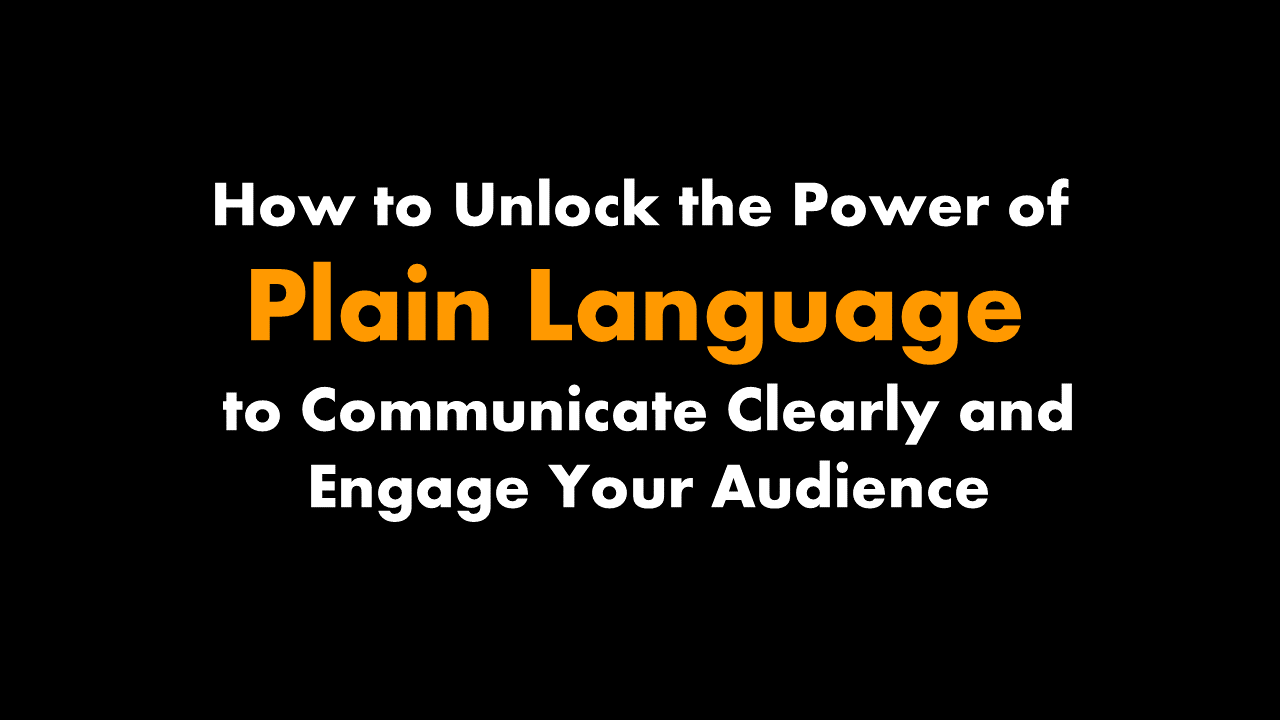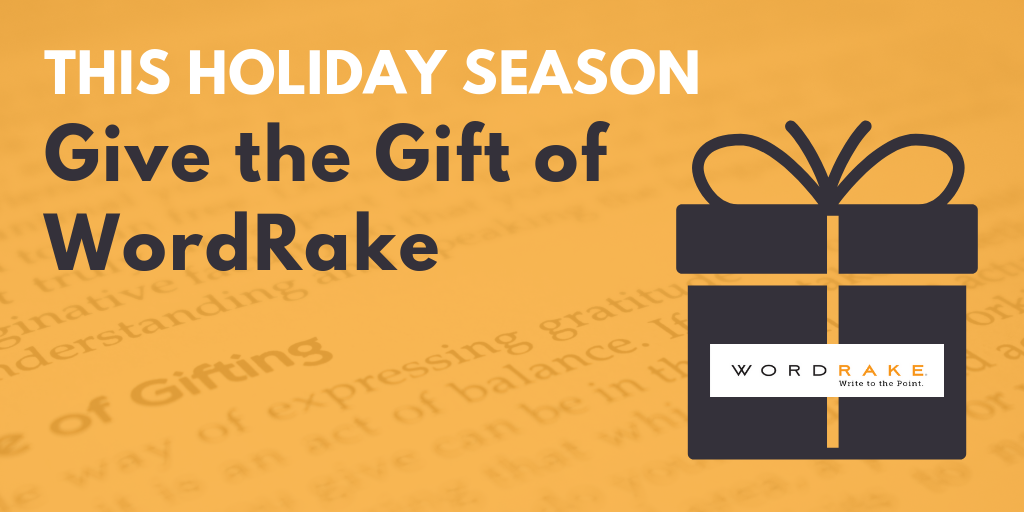Plain language isn't all about word choice and sentence structure: it's also about design. Where does information sit on a page or website? Are your graphics adding information and function, or just clutter? Information designers and plain language experts like Annie Burger are constantly thinking about how to make important content accessible and usable. She shares her experience with creating clear content with us for International Plain Language Day.
What is your role and how is it connected to plain language?
I am an information designer and a plain language practitioner at Hey Plain Jane. Basically, we help create clear communication and use any means to achieve that, including words and visuals. I am also a postdoctoral fellow at Stellenbosch University in South Africa. In my research I focus on plain language and how it is experienced in the real world.
What prompted your interest in plain language?
In my third year at university, I came across plain language in an applied linguistics class and it really spoke to me. I loved that it had to do with language, but it also had real-world implications. I was also intrigued by the fact that plain language goes against the grain and does things differently. I decided to do a post-graduate diploma in the field, and that then led me to do a Masters and a PhD in plain language.
What is the difference between plain language and plain English?
I think plain language and plain English can refer to the same thing, although plain English is a term most often used in the UK. I prefer the term plain language to plain English. I believe that the term plain language places too much emphasis on the word language and that plain language includes all aspects of communication, including design and structure. So too do I believe that the term plain English places too much emphasis on the English language. Plain language exists in many, if not all, languages. I specifically do research on plain language use in Afrikaans.
How are readability and plain language related?
Before a complete definition of plain language was out there, a lot of research was being done about what is meant by plain language. Annetta Cheek came up with three definitions of plain language: a formula-based, an elements-based, and an outcomes-based definition. The formula-based definition looked at the length of words, sentences, and paragraphs to determine how readable the text was. Cheek herself criticized this “definition” of plain language because although it was easy to test if text was readable by using readability tests, it did not say anything about whether the document was written in plain language. Readability is an important part of a plain language text, but so is usability and understandability.
What are unexpected ways that plain language comes up in law, healthcare, and finance?
In South Africa we have quite a few laws that explicitly say that organisations should write in plain language when talking to ordinary consumers. Because of this, there are a lot of South African organisations in the legal, medical, and financial contexts who use plain language, or at least they try to. What many of these organisations don’t understand, however, is that implementing plain language is more than just making a few sentences shorter or adding an infographic. What is more unexpected, but what should actually be the norm, is using plain language to completely change how an organisation does things. Plain language principles can be applied by simplifying complex procedures within an organisation and being open about how they do things. Only through applying plain language in everything that they do will an organisation truly feel its benefits.
What are some factors that indicate a need to write in plain language?
Although plain language is usually used when an organisation communicates with a client, I would go as far as to say that plain language should always be used in business writing. Annetta Cheek, a leader in the plain language movement, defines plain language as when a communication’s wording, structure and design are so clear that the intended reader can find what they need, understand what they find and use the information. Isn’t that what all business writing should want to achieve? Some more specific indications that plain language is needed are when you have lengthy negotiations, many customer queries about the same thing, or suppliers who can’t stick to the rules of an agreement simply because they don’t understand their responsibilities.
How does plain language impact access to justice?
When people don't understand their rights, they can't exercise them. When they want to exercise them, they don't understand how. That is immensely frustrating and dehumanising. Something as simple as understanding your employment contract, your lease agreement, the returns policy of the online store—those are things that many of us take for granted. But a very large portion of the population are entering into agreements without understanding what they are getting into, or how to get out.
Many professions (i.e., law, medicine, finance) are gatekeepers of important information for the public. What obligations do professionals have to communicate in plain language?
I think a lot of people go into the medical, financial and legal fields to help people, but somewhere along the way they get lost—they get stuck in a rut, they think that this is the way that it has always been done, or they don’t know any better. People should be rehabilitated in their thinking to realise that as the keepers of important information, they have the obligation to share their knowledge with the world for the greater good. Hopefully legislation like the ones in South Africa will help people on the right path.
What’s the most important—yet simple—change professionals can make to consumer-facing documents to improve understanding?
The first thing you need to do is identify your audience. Talk to them directly the way you would if you were standing in front of them. This will lead you to using the active voice. When authors start putting sentences in the active voice, they think about who the person is who is doing the thing, and then they might realise that they actually don’t know who is doing the thing. Then they find out more information, they add it to the communication, etc. Just changing passive sentences to active sentences can drastically help with reader understanding and help an organisation understand itself better.
Where will consumers commonly encounter the most confusing language?
Although confusing language is used in the legal, medical, and financial fields, I especially see confusing language used in the financial field. The financial field is particularly stressful because people work with their hard-earned money and their decisions can have serious consequences. They are confronted with abstract terms like “fixed assets”, “compound interest” and “equity”, and it all makes for a really stressful situation.
What are some consequential yet common instances where consumers encounter confusing language? How can plain language address these instances?
The insurance industry has developed its own jargon over the years. If a consumer doesn’t understand something in their insurance policies, it can have serious consequences for them. In short-term insurance documents especially there are many exclusions (“if this, then that”, “except when”, “unless”) and it is easy for a consumer to miss something – which can have serious consequences. Plain language helps to write this type of information in understandable language and in a logical order.
What’s the biggest danger to consumers if they don’t understand what is being communicated to them?
There are so many things that can go wrong if someone doesn’t understand something that is being communicated to them. They could misunderstand an instruction manual for a large implement and blow it up. They could sign something that they don’t understand and then quickly be in breach of their contract and face financial and reputational consequences. They could give permission for a company to mine their data. There are so many things that can go wrong when someone doesn’t understand something. When you don't understand, you're excluded and marginalised. Relationships are damaged (between parties), and there could be financial and reputational damage.
Beyond writing with simpler words and shorter sentences, what else can professionals do to communicate better for the public’s benefit?
Professionals should follow a design thinking methodology when communicating with the public. Only by completely empathising with their audience and really sitting with the problem before they come up with a solution will they communicate effectively. It is rare that people really get to the heart of a problem when they try to come up with solutions too quickly. You might think you can solve the problem of your audience not understanding something with an infographic, but maybe they actually need a live class or a video. Or maybe you should change the way that you are doing things.
What’s one piece of advice that you would offer to help a professional start using plain language?
Think about your audience and ask yourself how you would explain the information to them if they were standing in front of you.
What’s the most convincing statistic that you can share to convince professionals to start using plain language?
There are very few statistics out there because people don’t measure the success of their projects and they rarely publish about them. But if you are looking for evidence of success using plain language, there is no better thing to do than to talk to your audience. Nothing is more convincing than to hear your customers say that it feels like you are hiding something from them with your complex language or that you are trying to do them in. To then give them a plain language version and hear them say that it feels like a breath of fresh air or that it feels trustworthy is a powerful message.
About Annie Burger
Annie Burger is an information designer and plain language practitioner with 5 years’ experience in the field. Before that she was a learning designer with a focus on incorporating technology in the classroom. She is also a postdoctoral fellow at Stellenbosch University. Her research focus is plain language in the real world. You can find her on LinkedIn.
About WordRake and International Plain Language Day
Plain Language experts Cheryl Stephens and Kate Harrison Whiteside created International Plain Language Day on October 13, 2011 to celebrate the first anniversary of the signing of the Plain Language Act in the United States. Since then, plain language enthusiasts take time each year to celebrate the gains the movement has made.
In October 2022, WordRake celebrated Plain Language Day by releasing their new Simplicity editing mode to help comply with plain language laws. As firm believers in the importance of clear communication, WordRake celebrates October 13th by highlighting experts and leaders in the plain language field. To see how WordRake can help you simplify your writing, take a 7-day free trial today!








